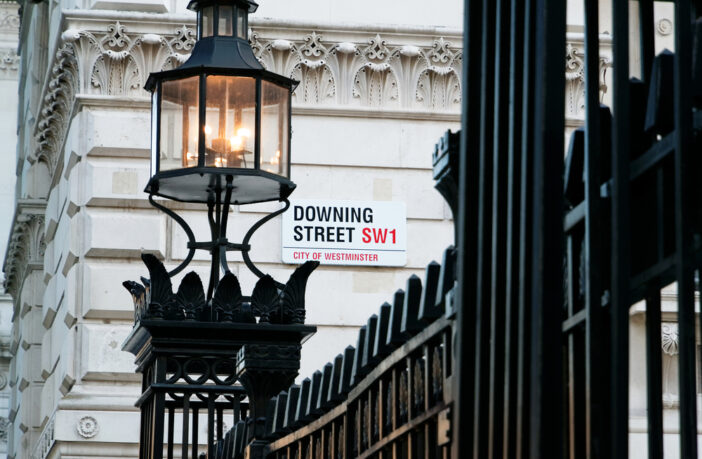By Jonquil Lowe, Senior Economics lecturer, personal finance
Leaks in the run-up to the Chancellor’s Autumn Statement primed us all to expect the worst, but his announcement was surprisingly upbeat.
It included:
- Spending increases to protect public services
- Further help for all with energy costs, a repeat next year of targeted cost-of-living support
- And assurances that in-work benefits and state pensions would rise by 10.1% in April, in line with September’s inflation rate
But it comes with a sting and a gloomy outlook as household living standards are expected to fall by 7% over the next two years, the worst since the 1950s according to the Office for Budget Responsibility (OBR).
You can’t buy as much anymore with the same cash
Households are already being squeezed because wages are rising at around 6% a year while annual inflation is 11.1%.
This will be exacerbated by the freeze on tax thresholds being extended until April 2028, instead of rising with inflation.
As wages and other incomes rise, the OBR estimates that 3.2 million people currently below the tax and national insurance thresholds of £12,570 earnings will become taxpayers by 2028.
Similarly, around 2.6 million people who currently pay income tax at the basic rate will become higher-rate taxpayers.
Help for some but it’s going to be tough
While the energy price guarantee shielding households from the full impact of soaring global energy prices is extended from April, energy bills for the ‘typical’ household will be allowed to rise to £3,000 a year (against £2,500 currently).
To help with the cost of living, next year, there will be grants of £900 for households on means-tested benefits, £300 for pensioner households and an extra £150 for individuals on disability benefits.
And there is partial help if you’re in social housing – these rents were set to rise by up to 11.1%, but will now be capped at 7% next year, yet it’s still a substantial rise.
The Bank of England base rate is likely to rise further next year putting pressure on homeowners buying with a mortgage, especially the 2.1 million whose existing fixed-rate deals are due to end between now and the end of 2024.
It’s going to be a tough two years, and while the situation is forecast to improve that depends on global energy and food prices falling back towards more normal levels, which in turn rests on geopolitical tensions easing.
The economic game has changed
By Alan Shipman, Senior Economics Lecturer
The economic rules of the game have changed again. After more than half a century of leaving the ‘supply side’ to private enterprise, subsidising only healthcare and education, the government used vast sums to rescue the financial sector in 2008, and since then we’ve grown used to public money flowing in whenever the private sector stumbles.
The Covid-19 furlough scheme seemed the ultimate confirmation, when Rishi Sunak became paymaster to large swathes of industry at an Exchequer cost of £70 billion.
By the time he became Prime Minister, the government had launched an even more lavish support act, capping everyone’s winter fuel bill at a projected cost of £89 billion. But now the state as universal backstop has reached a limit in the UK.
What we’ve been accustomed to in the past
After 1945, successive governments viewed their role as keeping conditions stable on the demand side – spend more and tax less when an economic slowdown threatens or apply the fiscal brakes if excessive expansion sends inflation too high. There was a safety-net for vulnerable households, but no blank cheque for business.
Kwasi Kwarteng was following convention with his tax cuts because widening the deficit is the traditional response when recession is forecast.
When that exploded, evicting him and Liz Truss from Downing Street, it exposed an uncomfortable truth: there really are limits to the amount of demand a government can inject via its budget, if there’s no clear plan for increasing supply.
History means there’s not much left in the tank
The public purse was stretched so thin there’s no money left for stabilising demand, so Jeremy Hunt was forced to travel in the opposite direction – his £55 billion budget will drain more demand from the economy and deepen the recession.
And because it will deepen the downturn, we can’t be certain that this new austerity will appreciably reduce public debt in proportion to GDP.
A squeeze on real wages – only way out
Modern Money advocates believe this is an over-reaction and that the previous expansionary budget would have worked if linked to clearer plans for inflation reduction and longer-term growth.
But the financial markets have a point. With double-digit inflation, widespread labour shortages, stagnant productivity and a record deficit in external trade, extra borrowing needs can now only be met with a much higher interest rate, to protect against the inflation that it’s likely to fuel.
So, the near-costless borrowing that shortened the 2008 and 2020 recessions is no longer an option for the UK in 2022. The already long-running squeeze on real wages, which may eventually boost demand via export competitiveness, now appears the Chancellor’s only way out.
Picture credit: Pres Panayotov for Shutterstock



